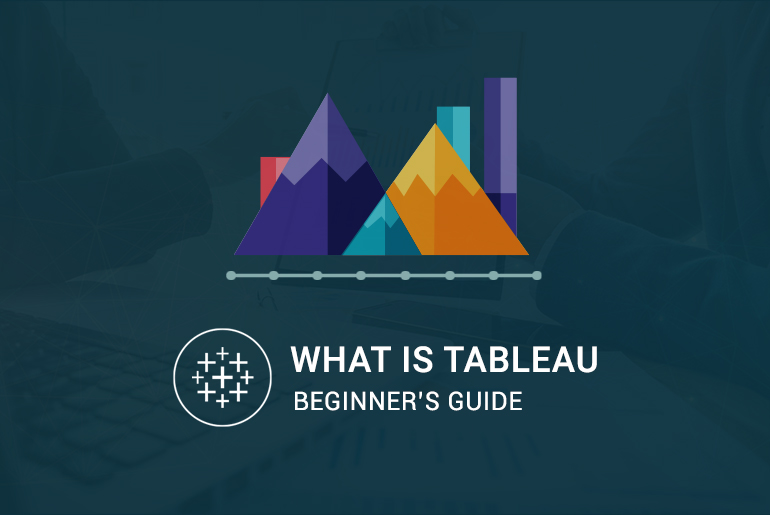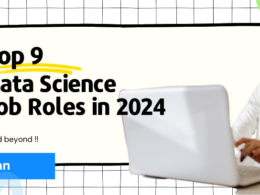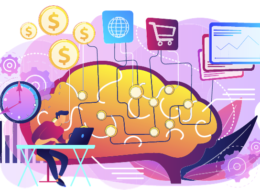Tableau is an interactive data visualization software aimed to primarily produce business intelligence from massive datasets.
Right now, the world is generating data at an alarming rate. Because of this, data handling which involves storage, processing, sorting, and visualisation, has become a complicated and difficult task.
But you don’t have to worry as Tableau helps you with just that.
In this article, let’s see why Tableau is required in Data Science, the platforms used to run Tableau and how you can use it to get optimum results.
What is Tableau?
Tableau is a business intelligence software used for data analysis and data visualization.
Based on drag and drop methods it helps you deal with massive datasets and allows data that was previously very difficult to bite into to be displayed and played with effortlessly.
Simple to use, Tableau has a powerful arsenal of data integration, filtering, sorting, and plotting tools that make it one of the most remarkable data visualisation platforms of the world today.
Why should you use it?
There can be any number of reasons for using Tableau that one could site, and each one would be convincing. But in the opinion of Research Team@ Accredian, the quality that makes Tableau unique is its ease of use.
Unlike the steep learning curve that packages such as Matplotlib or even Excel require, Tableau needs nothing.
You don’t need to know any programming languages, have any prior experience in data visualisation, or undergo any strenuous training to be able to use Tableau effectively.
You may wonder how that can be possible as any kind of data visualisation has to be preceded by data acquisition using SQL .
Well, you’re right. And there is.
Only in Tableau, this part of data handling is also visualised. They call it VizQL!
VizQL: SQL Visualised
VizQL, or Visual Query Language, is a way of firing queries at multidimensional datasets using simple drag and drop actions.
The entire complexity of SQL querying is abstracted into actions that come intuitively to human beings, resulting in a platform where remarkably complex operations can be performed on large and intricate datasets without formal knowledge on databases using or technical jargon.
Tableau is also one of the world’s most capable and advanced data engine with the capability to plot bigger and more complex datasets. And this is possible because of the software’s in-memory computing technology that makes optimal use of a computer’s memory right from the CPU’s L1 cache to the RAM available.
And if this makes you wonder if you need a server to run Tableau, the answer is no. Tableau is perfectly capable of being run on a desktop with (slightly above) average specifications.
Tableau Platforms
At present, Tableau offers their technology in four different platforms, all aimed at taking business data visualisation to the next level.
There’s the ever popular Tableau Desktop, runs on any standard computer and provides the full blown benefits of Tableau’s data visualisation.
As this report from The University of Maryland puts it, Tableau Desktop enables a user to “think visually”.
And it’s about a hundred times faster than Excel!
Apart from Tableau Desktop, Tableau also offers an analogue of their software to be run on servers that handle particularly large data sets.
Tableau server running on Linux machines, is much faster compared to its desktop alternative, and is a popular choice for firms relying on big data analytics for intelligence.
The third platform Tableau is available in is Tableau online. It’s basically the same as Tableau Server, except that this version is hosted online and can be accessed from anywhere in the world.
Not only that, visualisations can be shared between users and broadcasted to your entire company, making it an exceptionally powerful platform for generating business intelligence!
Getting Started with Tableau: A Few Pointers
There isn’t a lot of for you to do before you can use Tableau expertly to generate visualisations and business intelligence.
Although Tableau tutorials are all over the internet, if you’re reasonably good at Excel, chances are you don’t need to use them – it’s so intuitive!
Let’s go through the basic ecosystem that Tableau provides, analysing one aspect at a time.
Data Sources in Tableau
Tableau can connect to both static and dynamic data sources.
Static data sources include files (Excel spreadsheets, text files, Microsoft Access databases, Statistical files, etc.) whereas dynamic data sources primarily come from servers handling them.
Tableau can connect to its own Tableau Server, other than Microsoft SQL Server, Amazon Redshift, Oracle Server, MySQL, Google Analytics, Windows Azure, Hortonworks Hadoop Live, etc.
Tableau’s Connect Live feature allows it to draw data in real time from dynamic data sets, leading to visualisations that update with sub-second accuracy!
Additionally, Tableau’s engine is capable of drawing and combining data from more than a single source at the same time. So you can have visualisations that, for instance, take static data from a text file and relate it to dynamic data from a third-party big data server!
Multiple Worksheets
Just as Excel gives you three default spreadsheets once you open a file, Tableau gives you three default worksheets once you connect to a data source.
Worksheets are where you build the groundwork for your data analysis by creating suitable views. Multiple worksheets can be combined to form a paged workbook, which is ideal for visualisations that you need to refer to again and again.
Performing Calculations
To perform calculations on Tableau, you have to create a “calculated field” in your worksheet. The calculated field can be populated with a formula that depends on the nature of your work.
Tableau supports all standard mathematical operators, has a huge bank of predefined math functions, and Boolean operators. You can also create your own functions and apply them to individual fields and entire tables.
Tableau also allows you to control the level of detail in your calculations using LOD expressions, all of which is surprisingly quick and intuitive in the Tableau environment.
Plotting Data
Tableau’s pre-defined plotting environments are so diverse and numbered that almost all forms of data visualisation requirements can fit into them.
Tableau has bar charts, line diagrams, pie charts, Cross-tabs, scatter plots, bubble graphs, bullet graphs, box and whisker plots, tree maps, Gantt charts, histograms, motion charts, and waterfall charts, among several other similar data visualisation formats.
Plotting data is a simple drag and drop exercise and graph rendering is faster and more accurate than any other visualisation tool in the market.
Tableau: A SWOT Analysis
Tableau is undoubtedly a strong candidate for next generation data visualization technology, and to that end, Accredian Research Team did a detailed analysis of its strengths and weaknesses. Here we go!
Strengths
- Tableau is possibly the fastest data visualisation engine out there – it outperforms its peers such as Qlikview and Microsoft Power BI by several notches.
- It requires no formal training or expertise in data analytics – anyone with a PC can draw insightful business intelligence out of multidimensional datasets
- Tableau can connect to a wide range of data sources, from servers to file systems to relational databases. It can also integrate data from multiple sources to form hybrid datasets that lead to new information.
- Tableau can handle dynamically updating data streams from servers and generate real time visualisations of time-dependent datasets.
- Tableau makes it easy for users to share visualisations and dashboards among an enterprise. It is also easy to generate reports of periodically required data in Tableau, making it ideal for business enterprises.
Weaknesses
- Tableau is laser-targeted at providing business intelligence solutions. This strangles its market potential, because it does not define itself as a general data visualisation tool.
- The Tableau package is extremely expensive, making it beyond the reach of small and medium businesses who are looking to improve their data analytics.
- Tableau doesn’t support 3D scatter plots, colour maps, and several other similar plotting formats. It also doesn’t have the option of expanding its tool set through external plugins.
- Because Tableau is proprietary, it is difficult to integrate it with third-party apps that have the potential of taking data visualisation to unforeseen horizons.
- Tableau still doesn’t have predictive analytics inbuilt into its system – it’s something that has been rumoured to be coming up in subsequent versions of the software.
- Tableau doesn’t provide its users with the level of security required to make it suitable for use by enterprises.
Opportunities
- Because Tableau is excellent at plotting massive data sets, it’s integration with big data analytics tools is a major opportunity. Part of this has already been realised, as latest Tableau versions have the capacity to link to Big Data clusters such as Hortonworks Hadoop Live, but much is yet to be done.
- Building a one-off data visualisation solution for all industries combined. At present, Tableau only caters to customers looking for BI, even though the software has the capacity to do much more.
Threats
- Tableau has been accused of sloppy after-sales support to customers – something that can severely debilitate its future prosperity.
- Microsoft’s Power BI, a very similar tool as Tableau, has been providing it with steady competition.
Final Thoughts
Tableau is an intuitive data visualisation tool that is aimed at generating business intelligence. It relies on VizQL, a visual form of SQL that doesn’t require any formal acquaintance with data analytics.
Tableau has a vast and impressive collection of inbuilt tools for calculations and plotting of datasets and has the world’s most powerful data visualisation engine that relies on in-memory computation to generate results a hundred times faster than its competitors.
While it has several undeniable advantages, there is ample room for improvement, and Tableau has been steadily advancing its software since its inception in 2002. You can use Tableau on desktop, from a server, or via a browser from a web-hosted server.
But, irrespective of its shortcomings, Tableau has emerged as one of the top data visualisation tools for its ease of use, zero to none coding requirements and the capacity to analyze multiple datasets at the same time.
So do you think Tableau can help in your business? Tell us your views on this data visualisation tool in the comments below.
And if you are interested to learn the many nuances of the new age Data Science and Machine Learning, drop your queries here.





